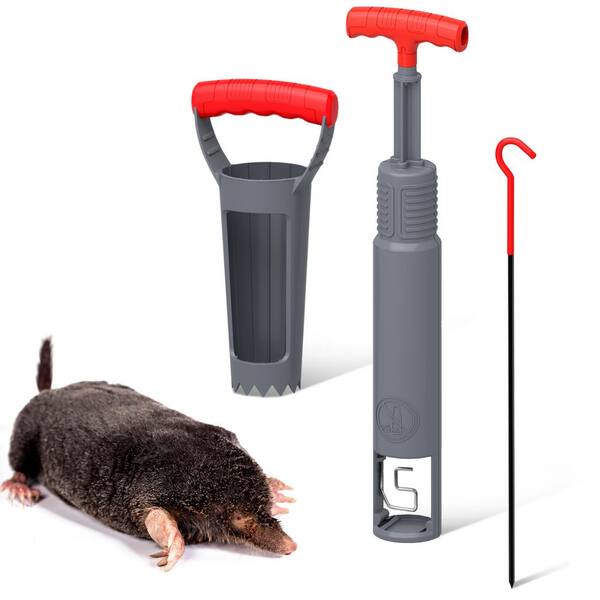Safeguard Your Garden with Our Gopher Control Services
Safeguard Your Garden with Our Gopher Control Services
Blog Article
Ultimate Overview to Gopher Control: Tips for a Pest-Free Yard
In the quest of maintaining a flourishing garden, dealing with gophers can provide an awesome challenge to also the most skilled garden enthusiasts. By understanding gopher habits, executing natural repellents, using reliable trapping methods, and developing physical obstacles, you can significantly minimize gopher invasions and safeguard the wellness of your garden.
Comprehending Gopher Habits
To successfully control gophers in your yard, it is essential to recognize their habits patterns and behaviors. Gophers are singular creatures, with each gopher maintaining its very own burrow system.

Natural Repellents and Planting Methods
Applying all-natural repellents and critical planting techniques can properly prevent gophers from creating chaos in your yard. Additionally, producing barriers underground utilizing gopher baskets made of cable mesh can secure the origins of your plants from being consumed by gophers.
Additionally, using natural predators like owls, snakes, or domesticated pets such as pet cats can help control the gopher population in your area. Snakes and owls are natural predators of gophers and can help keep their numbers in check. Urging these killers to inhabit your yard can supply a natural kind of gopher control.
Efficient Trapping Methods
Using humane and reliable capturing methods is vital in taking care of gopher infestations in your yard. When choosing catches, it is essential to select ones specifically developed for gophers to raise the probability of trapping success.
Passage catches are placed directly into gopher tunnels and are efficient at capturing gophers as they travel through their burrows. Cinch traps are positioned in the primary passage of the gopher and are set off when the gopher pushes versus the trigger plate.
To boost the effectiveness of trapping, it is recommended to find energetic tunnels by penetrating the ground and setting traps in these places. On a regular basis checking and resetting traps is important for successful gopher control. By making use of these capturing techniques, you can successfully reduce gopher populaces in your garden and prevent more damages to your plants.
Developing Physical Barriers
One reliable approach for preventing gophers from attacking your garden is to set up durable cable mesh obstacles underground. These obstacles work as a physical deterrent, avoiding gophers from delving into your yard beds and triggering damage to your plants. When installing cable mesh barriers, it is important to use materials that are strong and durable to hold up against the gophers' persistent excavating efforts. The mesh should be hidden at the very least 24 inches deep to effectively obstruct gophers from tunneling below.

Keeping a Routine Tracking Set Up
Normal tracking of your garden is crucial in effectively handling gopher activity and protecting against why not look here prospective damage to your plants. By establishing a routine examination routine, you can promptly identify any type of indications of gopher presence and take needed actions to attend to the issue prior to it escalates. Reserve particular times each week to go through your yard, paying close attention to any piles, tunnels, or wilting plants, as these can indicate gopher activity.
During your monitoring sessions, think about site web using gopher-specific signs such as fresh dust mounds, gnawed origins, or newly dug tunnels to identify energetic areas. Maintain a journal or map to track these transfer time, helping you determine high-traffic zones that call for immediate treatment. Furthermore, consider setting up motion-activated electronic cameras or catches in critical areas to collect more information concerning gopher habits patterns in your yard.
Normal monitoring not only permits you to analyze the effectiveness of your gopher control techniques however likewise allows you to adapt your techniques based on real-time observations, eventually bring about a healthier and pest-free garden.
Conclusion
Finally, regulating gophers in your yard requires a mix of understanding their actions, utilizing natural repellents and planting techniques, efficient trapping techniques, creating physical barriers, and maintaining a regular surveillance timetable. By executing these techniques, you can keep your yard pest-free and make sure the wellness of your plants. Bear in mind to remain attentive and aggressive in your gopher control efforts to preserve a gorgeous and flourishing garden.
By understanding gopher actions, executing all-natural repellents, using efficient trapping approaches, and developing official website physical obstacles, you can dramatically alleviate gopher invasions and protect the wellness of your yard.
In addition, producing barriers underground making use of gopher baskets made of cable mesh can secure the roots of your plants from being eaten by gophers.Box catches are put near gopher piles and offer as an inviting tunnel for the gopher to enter. Passage traps are put straight into gopher tunnels and are reliable at catching gophers as they take a trip through their burrows. Cinch traps are placed in the primary tunnel of the gopher and are caused when the gopher pushes against the trigger plate.
Report this page